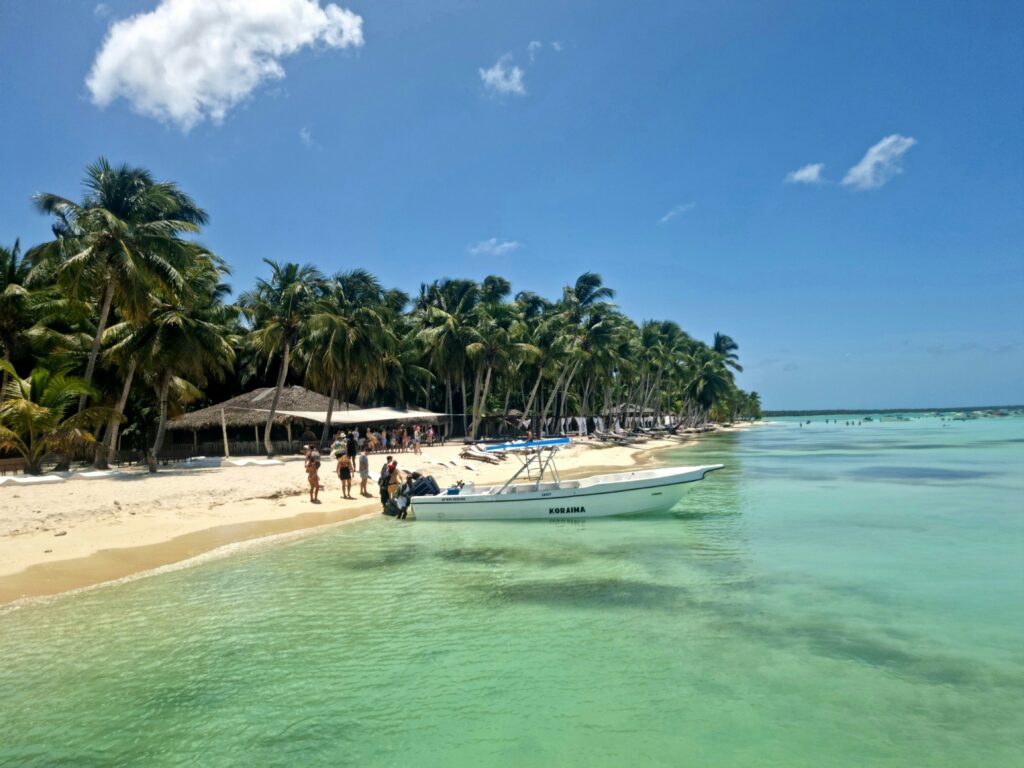Typhoid in Costa Rica: Separating Fact from Fiction
Understanding the Real Typhoid Risk in Costa Rica
Costa Rica has earned its reputation as a premier travel destination, drawing millions of visitors each year with its stunning biodiversity, pristine beaches, and adventurous activities. However, concerns about health risks, particularly typhoid fever, can cause unnecessary worry among travelers. This comprehensive guide aims to clarify misconceptions surrounding typhoid fever in Costa Rica, providing accurate information about the actual risks, recommended vaccinations, and preventive measures for both residents and visitors. By understanding the true health landscape, you can make informed decisions and enjoy your Costa Rican experience with confidence.
What is Typhoid Fever?
Typhoid fever is a bacterial infection caused by Salmonella Typhi, which is typically spread through contaminated food and water. The disease can cause high fever, weakness, stomach pain, headache, and loss of appetite. In severe cases, it can lead to serious complications if left untreated. While typhoid is a concern in many developing regions around the world, it’s important to understand its actual prevalence in Costa Rica rather than relying on general assumptions about tropical countries.
The Actual Prevalence of Typhoid in Costa Rica
Despite common misconceptions, typhoid fever is not highly prevalent in Costa Rica. The country maintains relatively high standards of sanitation and water treatment, particularly in urban areas and established tourist destinations. Costa Rica has invested significantly in public health infrastructure, which has helped to minimize the risk of waterborne diseases, including typhoid. According to health authorities, Costa Rica has a lower incidence of typhoid compared to many other Latin American countries, with most reported cases occurring in rural areas with limited access to clean water and proper sanitation.
However, this doesn’t mean the risk is completely absent. As with many health concerns while traveling, understanding the nuanced reality helps travelers make appropriate preparations without unnecessary anxiety. For a broader perspective on typhoid risks throughout Latin America and the Caribbean, you can refer to this comprehensive regional overview.
Official Health Recommendations for Costa Rica Travelers
According to the Centers for Disease Control and Prevention (CDC), typhoid vaccination is not universally recommended for all travelers to Costa Rica. Instead, it is specifically advised for certain categories of travelers who might face increased risk. These include:
- Travelers who plan to stay with friends or relatives in local homes
- Those visiting smaller cities, villages, or rural areas
- Adventure travelers or backpackers who may consume food and water in less controlled environments
- Long-term travelers or expatriates who will be living in Costa Rica for extended periods
For typical tourists staying in standard accommodations and frequenting established restaurants in major tourist areas, the risk is generally considered lower. However, personal risk assessment should take into account your specific itinerary, activities, and health status.
Common Misconceptions About Typhoid in Costa Rica
Several misconceptions persist regarding typhoid in Costa Rica that often lead to unnecessary concern among travelers:
Misconception #1: “All travelers to Costa Rica need typhoid vaccination.”
Reality: As mentioned above, vaccination is recommended primarily for specific risk categories, not universally for all travelers.
Misconception #2: “Tap water throughout Costa Rica is unsafe.”
Reality: Water quality varies by region. Major tourist areas and the capital city of San José generally have potable tap water. However, in more remote areas, bottled or purified water remains the safest option.
Misconception #3: “Typhoid is a major health concern in Costa Rica.”
Reality: While typhoid exists in Costa Rica, it is not among the most prevalent health concerns for travelers. Other issues like dengue fever, traveler’s diarrhea, and sun exposure typically pose greater risks.
Misconception #4: “Street food in Costa Rica should always be avoided due to typhoid risk.”
Reality: While caution is advised, many street food vendors in Costa Rica maintain good hygiene standards. Look for busy stalls with high turnover, visible food preparation, and good hygiene practices.
Real Health Priorities When Visiting Costa Rica
When preparing for a trip to Costa Rica, it’s important to prioritize health precautions based on actual risk levels rather than misconceptions. According to health authorities, visitors to Costa Rica should be more concerned about:
- Mosquito-borne illnesses: Dengue fever, Zika virus, and Chikungunya pose more significant risks in Costa Rica than typhoid fever. Using insect repellent, wearing protective clothing, and staying in accommodations with screens or air conditioning are essential precautions.
- Traveler’s diarrhea: This common travel ailment is more prevalent than typhoid and can be prevented through careful food and water choices.
- Sun exposure and heat-related illness: Costa Rica’s tropical climate puts travelers at risk for sunburn, heat exhaustion, and dehydration.
- Adventure activity safety: Given Costa Rica’s popularity for activities like zip-lining, surfing, and hiking, safety during these activities often represents a more immediate concern than infectious diseases.
By focusing on these more common issues while taking reasonable precautions against less frequent risks like typhoid, travelers can develop a balanced approach to health safety.
Typhoid Vaccination Options for Costa Rica Travelers
For those who fall into higher-risk categories or simply prefer the additional protection, there are two main types of typhoid vaccines available:
- Oral vaccine (Vivotif): This vaccine consists of four capsules taken over eight days, with the last dose completed at least one week before travel. The oral vaccine provides protection for approximately 5 years. As an oral medication, Vivotif offers convenience for many travelers who prefer to avoid injections.
- Injectable typhoid vaccine: This single-dose shot provides protection for about 2 years and is typically administered at least 2 weeks before travel.
Each vaccine has its advantages in terms of administration method, duration of protection, and potential side effects. Consulting with a travel health specialist can help determine which option best suits your individual needs, travel plans, and medical history.
Practical Food and Water Safety Tips for Costa Rica
While the risk of typhoid in Costa Rica is lower than in many other tropical destinations, practicing good food and water safety remains a prudent approach for preventing not just typhoid but a range of other gastrointestinal illnesses. Here are practical tips for reducing your risk:
Water Safety:
- In major tourist areas and San José, tap water is generally safe, but when in doubt, opt for bottled water with sealed caps.
- Consider carrying a portable water purification system if traveling to remote areas.
- Remember that ice cubes, beverages with ice, and fresh juices may be made with tap water.
- Use bottled or purified water for brushing teeth in areas where water safety is uncertain.
Food Safety:
- Choose freshly cooked, hot foods over items that may have been sitting at room temperature.
- Be cautious with raw vegetables and fruits unless you can peel them yourself.
- Avoid unpasteurized dairy products and undercooked meat or seafood.
- Select restaurants and food stalls with high customer turnover and visible cleanliness.
- When trying local street food, observe hygiene practices and food handling before purchasing.
Following these guidelines will significantly reduce your risk of food and waterborne illnesses, including the already low risk of typhoid in Costa Rica.
Regional Variations in Typhoid Risk Within Costa Rica
It’s important to note that health risks in Costa Rica are not uniform across the country. The risk of typhoid and other waterborne illnesses varies significantly based on location:
Lower-Risk Areas:
- San José and the Central Valley
- Major beach destinations like Manuel Antonio, Tamarindo, and Jaco
- Established tourist areas such as Monteverde and La Fortuna/Arenal
Potentially Higher-Risk Areas:
- Remote rural communities, particularly in the southern zone near the Panama border
- Less developed areas with limited infrastructure
- Some indigenous territories with restricted access to modern sanitation
Understanding these regional differences can help travelers make more nuanced decisions about typhoid vaccination and other preventive measures based on their specific itinerary rather than applying blanket assumptions to the entire country.
Other Recommended Vaccinations for Costa Rica
While typhoid vaccination may not be necessary for all Costa Rica travelers, other vaccinations should be considered as part of comprehensive travel health preparation:
- Hepatitis A: Recommended for most travelers as it can be contracted through contaminated food or water, regardless of where you stay or eat.
- Hepatitis B: Recommended for travelers who might have new sexual partners, get tattoos or piercings, or have medical procedures during their trip.
- Routine vaccinations: Ensure you’re up-to-date on routine vaccines like measles-mumps-rubella (MMR), diphtheria-tetanus-pertussis, and influenza.
- COVID-19: Staying current with recommended COVID-19 vaccinations remains advisable for international travelers.
Unlike some other countries in Latin America, Costa Rica does not require proof of yellow fever vaccination for most travelers, unless you’re arriving from a country with yellow fever risk.
Travel Insurance and Medical Care in Costa Rica
Beyond preventive measures like vaccinations, preparation for health concerns in Costa Rica should include understanding the local healthcare system and securing appropriate travel insurance. Costa Rica offers relatively high-quality medical care, particularly in San José and other major cities, but costs can be substantial for foreign visitors without insurance.
Comprehensive travel health insurance is strongly recommended for all visitors to Costa Rica. This should include coverage for emergency medical evacuation, which can be extremely expensive if required from remote areas. When selecting insurance, verify that it covers any activities you plan to participate in, as adventure sports and certain outdoor activities may require additional coverage.
Emergency medical services in Costa Rica can be accessed by dialing 911. For non-emergency situations, private clinics in tourist areas often have English-speaking staff and are accustomed to treating foreign visitors.
Special Considerations for Long-Term Visitors and Expatriates
If you’re planning an extended stay in Costa Rica as a digital nomad, retiree, or expatriate, your health considerations may differ from those of short-term tourists. Long-term residents should:
- Consider a broader range of vaccinations, including typhoid, regardless of where in the country you’ll be living
- Investigate local healthcare options, including the Costa Rican public healthcare system (Caja Costarricense de Seguro Social or CCSS) and private medical insurance options
- Develop relationships with healthcare providers in your area
- Learn about seasonal health concerns, as disease risks can vary throughout the year
Extended stays provide the opportunity to learn more about local conditions and adapt accordingly, but they also increase potential exposure to various health risks over time.
Conclusion: Balanced Preparation for a Healthy Costa Rica Experience
The misconceptions surrounding typhoid fever in Costa Rica often lead travelers to either unnecessary anxiety or inappropriate complacency. The reality is more nuanced: while typhoid does exist in Costa Rica, it poses a relatively low risk for most travelers who stay in developed areas and practice basic food and water safety. Vaccination is recommended primarily for specific risk groups rather than as a universal requirement.
By taking a balanced approach to health preparation—which includes assessing your personal risk factors, understanding regional variations, considering appropriate vaccinations, practicing preventive measures, and securing comprehensive travel insurance—you can enjoy Costa Rica’s remarkable natural beauty and cultural richness with confidence.
For those who determine that typhoid vaccination is appropriate for their travel plans, Vivotif oral typhoid vaccine offers a convenient option that can be ordered from Runway Health. This prescription medication provides protection against typhoid fever without requiring an injection and can be taken in the comfort of your home before departure.
Remember that good preparation enhances your travel experience by providing peace of mind, allowing you to focus on creating memorable experiences in one of Central America’s most beloved destinations rather than worrying unnecessarily about health concerns.

